Cosy holiday home rentals in Sète, France
Le Pouffre and Le Piade***
Visit the filming locations of Demain Nous Appartient
In short
Are you a fan of the TF1 series Demain Nous Appartient filmed in Sète? Here, we describe several iconic locations from the show, such as the production studio, the former Victor Hugo High School, the Tribunal, and famous spots like the Marine Cemetery, the Sea Theatre and La Corniche beach. Immerse yourself in the world of Demain Nous Appartient!
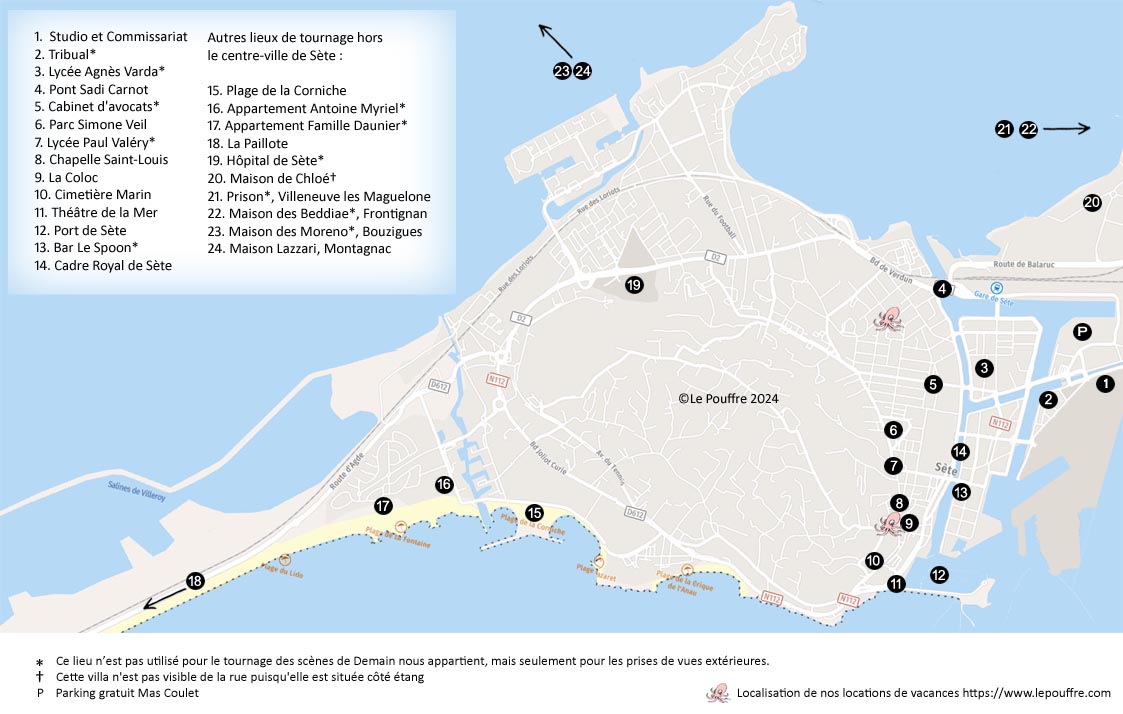
Film studio and the police station
278 Avenue du Maréchal Juin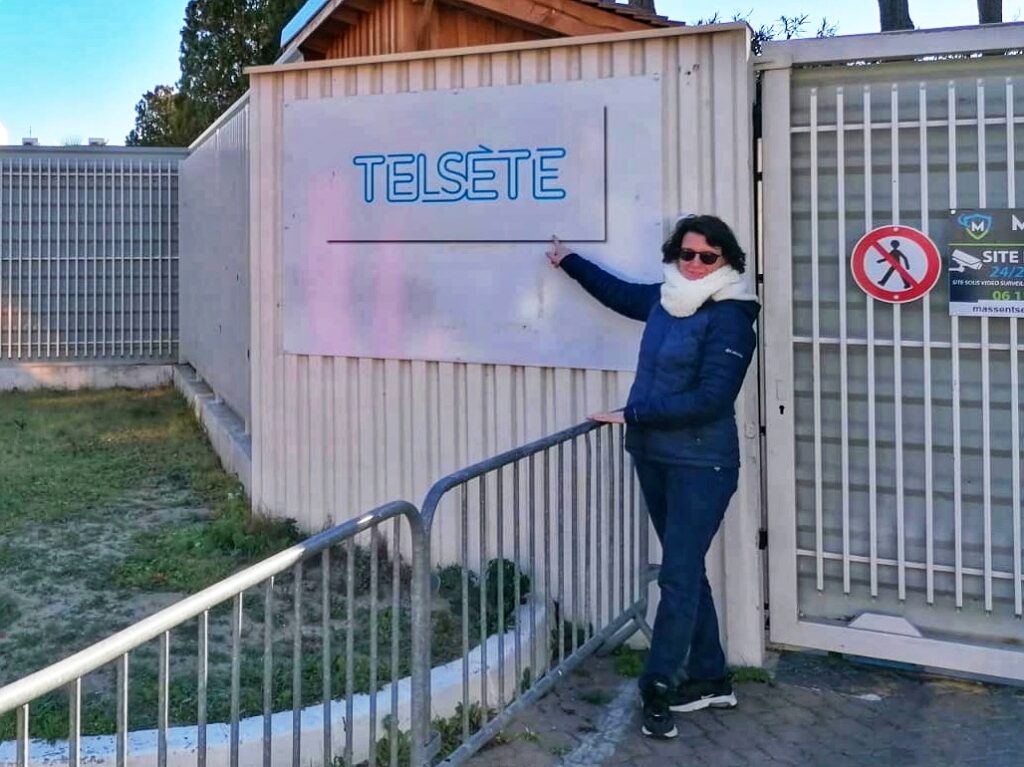 Demain Nous Appartient’s film studio is located in Sète, the town where the series is set. More precisely, it is located on the production company’s premises. The Tel Sète-Telfrance production company occupies a vast 7,500 m2 surface area, which provides enough space to build more than 15 sets that guarantee visual consistency for the indoor scenes.
Demain Nous Appartient’s film studio is located in Sète, the town where the series is set. More precisely, it is located on the production company’s premises. The Tel Sète-Telfrance production company occupies a vast 7,500 m2 surface area, which provides enough space to build more than 15 sets that guarantee visual consistency for the indoor scenes.
Unfortunately, DNA’s studio is not open to the public for tours. However, fans may be lucky enough to bump into some of the cast and crew as they stroll around the area. Sète’s peaceful atmosphere and the beauty of the Mediterranean make it a popular spot for fans of the series. So don’t hesitate to book your stay in Sète and enjoy the atmosphere of Demain nous appartient!
Agnès Varda High School
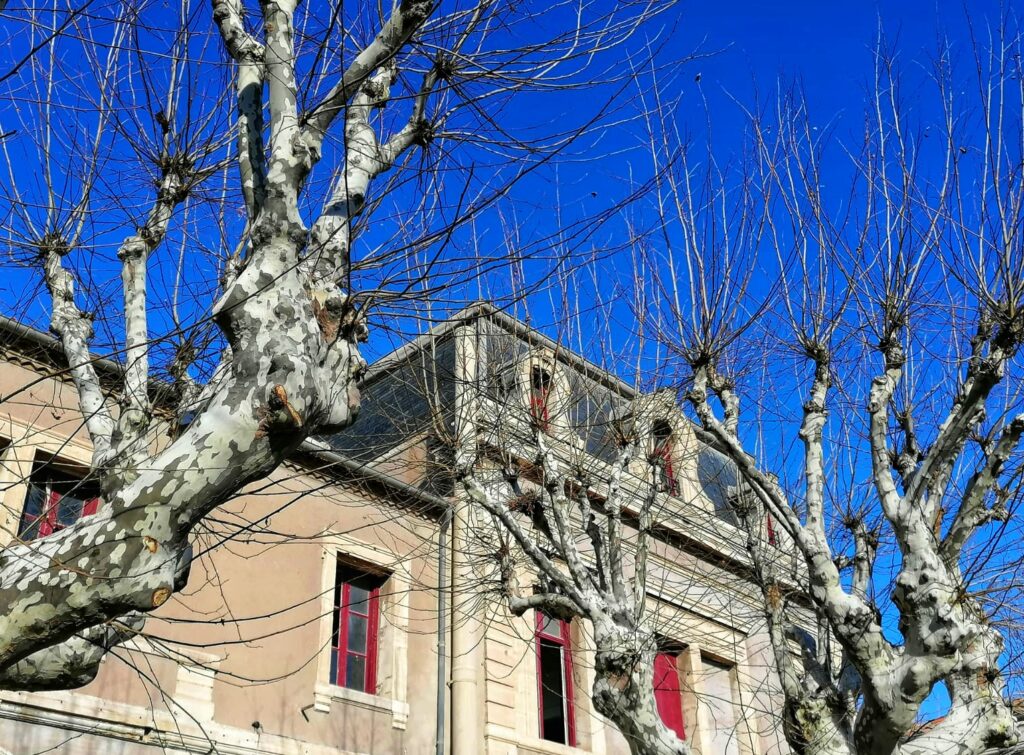 2 rue Lakanal
2 rue Lakanal
While the interior of the Agnès Varda High School was reconstructed in the film studio, exterior shots and scenes set in the schoolyard were shot in the former Collège Victor Hugo (Victor Hugo Middle School) in Sète. A new page has now been turned: after being a secondary school, it hosted workshops that the artists graciously occupied on a rotating basis for around ten years, between 2006 and 2016. The middle school is currently the subject of a vast project to rehabilitate and transform it into a connected university campus.
The courthouse
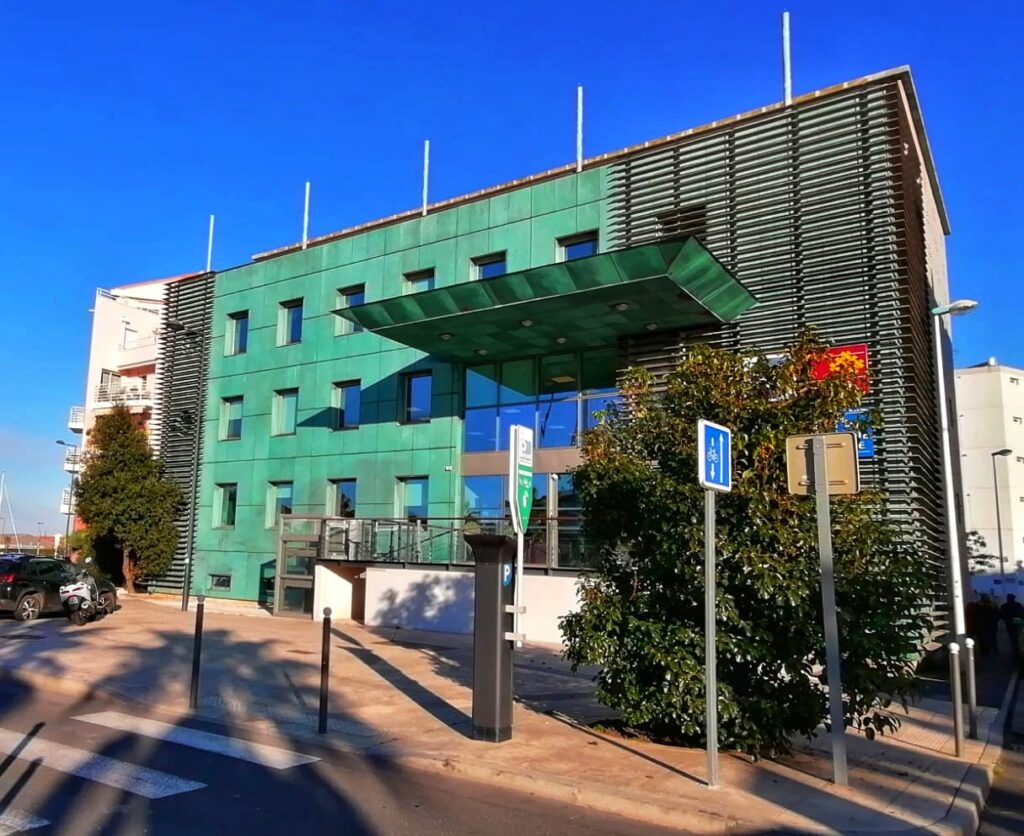
187 Quai d’Orient
The Crédit Maritime Mutuel regional branch is the perfect backdrop for Sète’s courthouse. Its modern architecture gives it an unmistakable charm on screen and the decision to use a real-life building for exterior and interior shots is explained by the production team’s concern for realism. What’s more, it allows fans of the series to visit the filming locations when they travel to Sète, creating a unique immersive experience.
Sadi Carnot lifting bridge
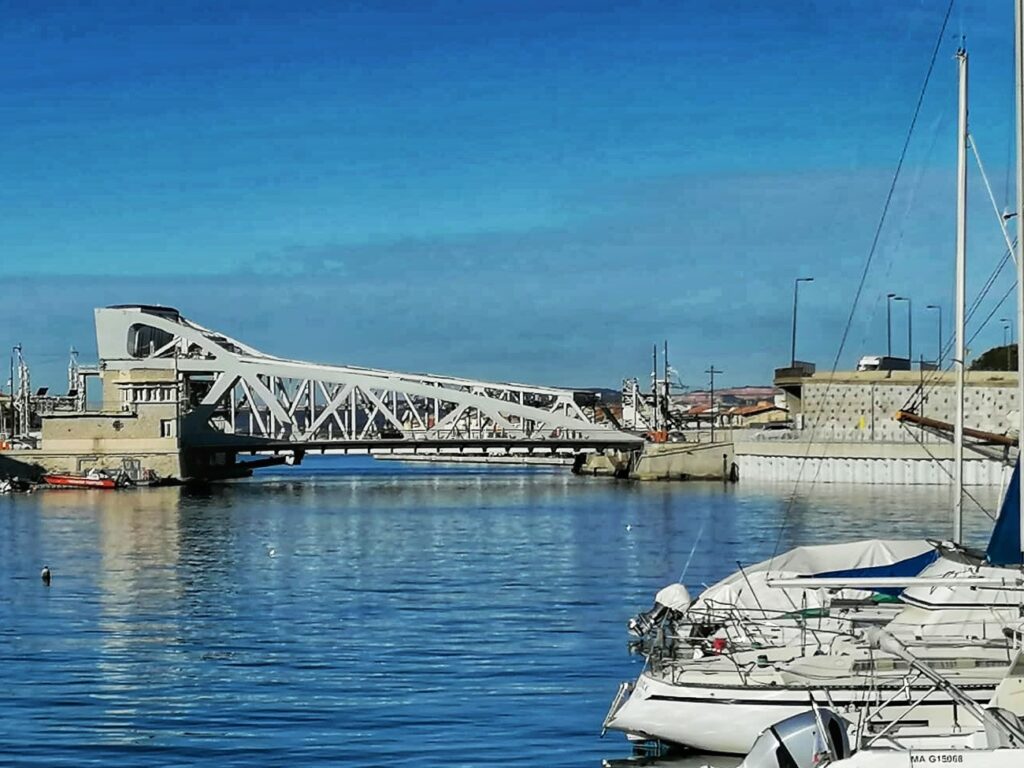
The Sadi Carnot bridge, 76 metres long and 24 metres wide, now offers a safer, more comfortable route for motorists and pedestrians alike. Manufactured in the Venice region of Italy, the bridge is a testament to the expertise of its builders, who have created a structure that is both functional and aesthetically pleasing. The convoy to bring the new bridge to the Thau lagoon was a real logistical challenge as the narrow canals presented difficult obstacles to cross, with sometimes only one metre between the barge and the quay! But on Friday, 12 July 2019, the new bridge was installed.
The law firm
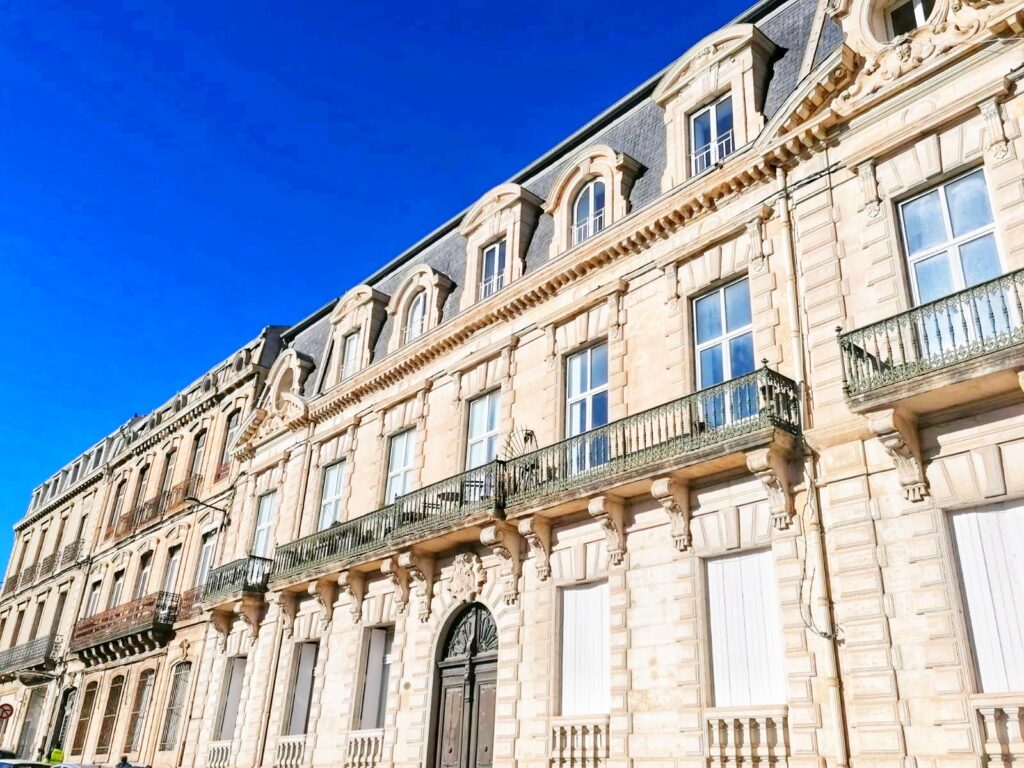
14 rue Gabriel Péri
The Cabinet Clément building is a real landmark for Christophe Bourgueil, Lou Clément and Soraya Beddiar. It is here that they conduct their investigations and solve complex legal cases. Since Christophe Bourgueil’s death, the firm has been renamed in his honour, to perpetuate his memory and legacy.
The building is magnificent, with its white stone facade giving it an imposing appearance, contrasting with the other surrounding buildings. The large windows provide plenty of natural light inside, as well as an unobstructed view of Place Aristide Briand, just across the street.
Simone Veil Park
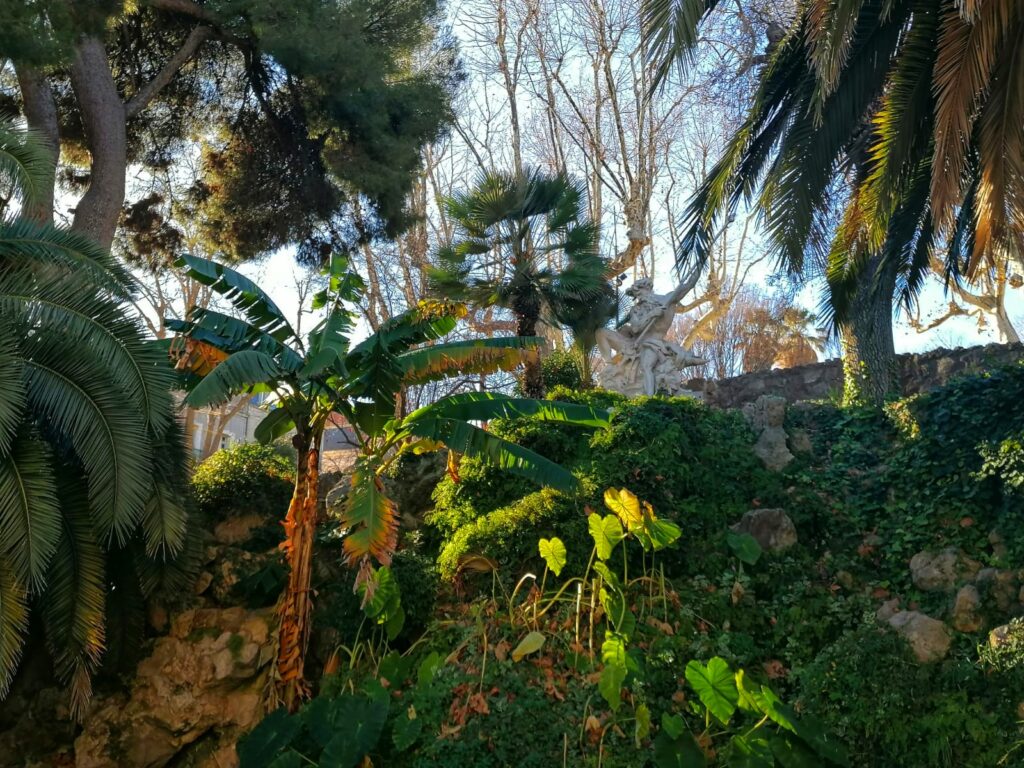
7 rue Député Salis
Simone Veil Park, created at the end of the 19th century, is an exceptional place in Sète, a town where there isn’t much greenery. Formerly known as the Jardin du Château d’Eau, the park was renamed in honour of Simone Veil in 2005, following a decision by the mayor.
As you stroll through its 1.6 hectares, you’ll discover century-old trees, and the statues scattered throughout the park are veritable artistic masterpieces, bearing witness to the region’s history and heritage. Ponds and fountains add a touch of freshness and serenity to the landscape, creating an environment conducive to relaxation and escape. Don’t miss a visit to the mysterious grotto, which fascinates visitors with its intriguing atmosphere!
Paul Valéry High School
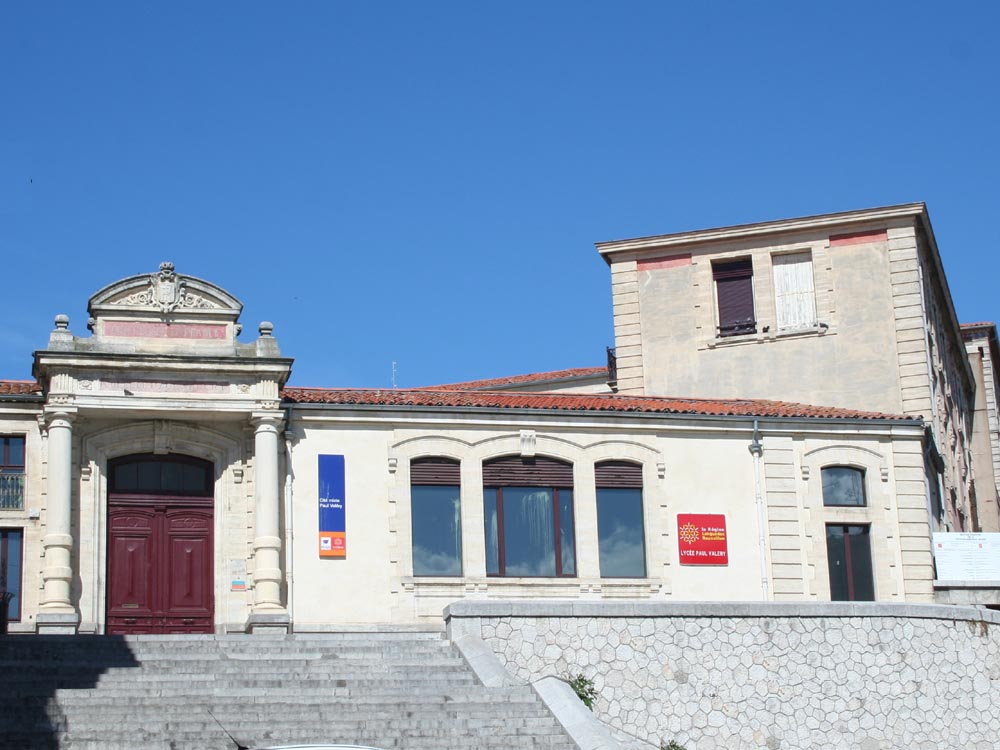
55 rue Paul Valéry
Paul Valéry High School is a real-life high school in Sèt, where all the teenage characters in the series attend classes in seasons 1-4. Due to the discovery of asbestos, students and teachers were later transferred to Agnès Varda High School. It is only used for exterior shots; sequences set in the High School are shot in the series film studio. A little history: in 1836, the town acquired a plot of land where, the following year, a boarding school for boys was established. The building became a community college in 1844. Since its reconstruction in the early 20th century, it has featured a monumental doorway framed by columns overlooking a staircase that dominates Rue Paul Valéry and offers a remarkable set of terraced courtyards. It became a high school in 1966.
Saint-Louis Decanal Church
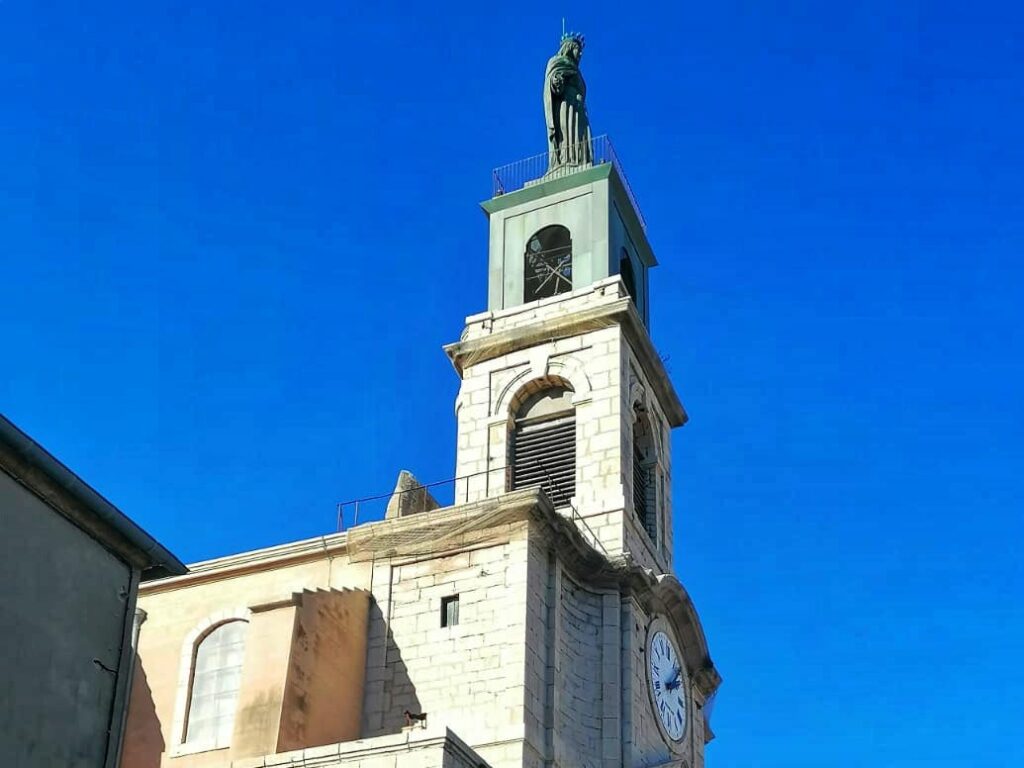
Rue des 3 Journées
Saint-Louis decanal church is in the heart of the Quartier Haut, the oldest district in Sète, where artists’ studios are located. It’s the town’s oldest and largest church, known as La Décanale.
Built in stone in 1702 in honour of the town’s patron saint, it was designed by the architect Daviler, who had collaborated with the great Renaissance architect Mansart. The church was built on the site of a temporary wooden church, the foundation stone of which was laid in 1666. In 1989, Saint-Louis decanal church was declared a historic monument.
Every year, during the Fête des Pêcheurs (Fishermen’s Festival), the statue of Saint-Pierre, patron saint of fishermen, is transported to the Saint-Louis decanal church for high mass. It is then carried in procession into the sea as a tribute to the sailors who have lost their lives.
The shared apartment
10 rue Villaret Joyeuse
Demain Nous Appartient shared apartment is an iconic location in the series, on the street parallel to Le Pouffre! Located at 10 Rue Villaret Joyeuse in the Quartier Haut, just a few metres from the Saint-Louis decanal church, this apartment is a real landmark for fans of the series.
Although the shared apartment is not open to visitors, many fans come to take photos of the exterior of this much-loved place.
The Marine Cemetery
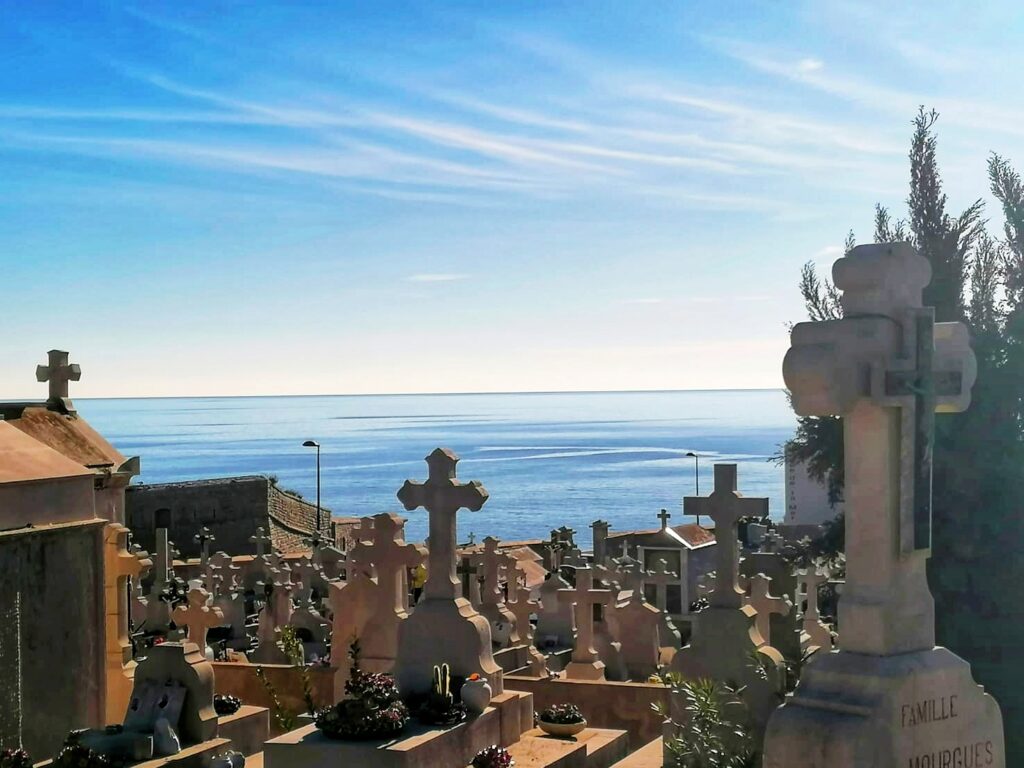
Chemin du Cimetière Marin
Perched on the heights of Mont Saint Clair in the Quartier Haut artists’ quarter, the Marine Cemetery overlooks the port of Sète and the Mediterranean Sea. Formerly known as the Saint Charles Cemetery, it was created around 1680 as a burial ground for the first workers to die during the construction of the Saint-Louis breakwater. The first 1064 m² was developed over the following centuries with a series of plots, including one reserved for the Protestant community, which played a key role in the port’s growth in the 18th and 19th centuries.
Several graves recall the town’s maritime history, including that of politician Mario Roustan, French actor and director Jean Vilar, jouster Vincent Cianni, known as “the man of a hundred victories”, and filmmaker Henri Colpi. But the most famous personality is Paul Valéry, the French poet, essayist and philosopher who died on 20 July 1945 and is buried in this cemetery in the grave of his ancestors.
Théâtre de la Mer
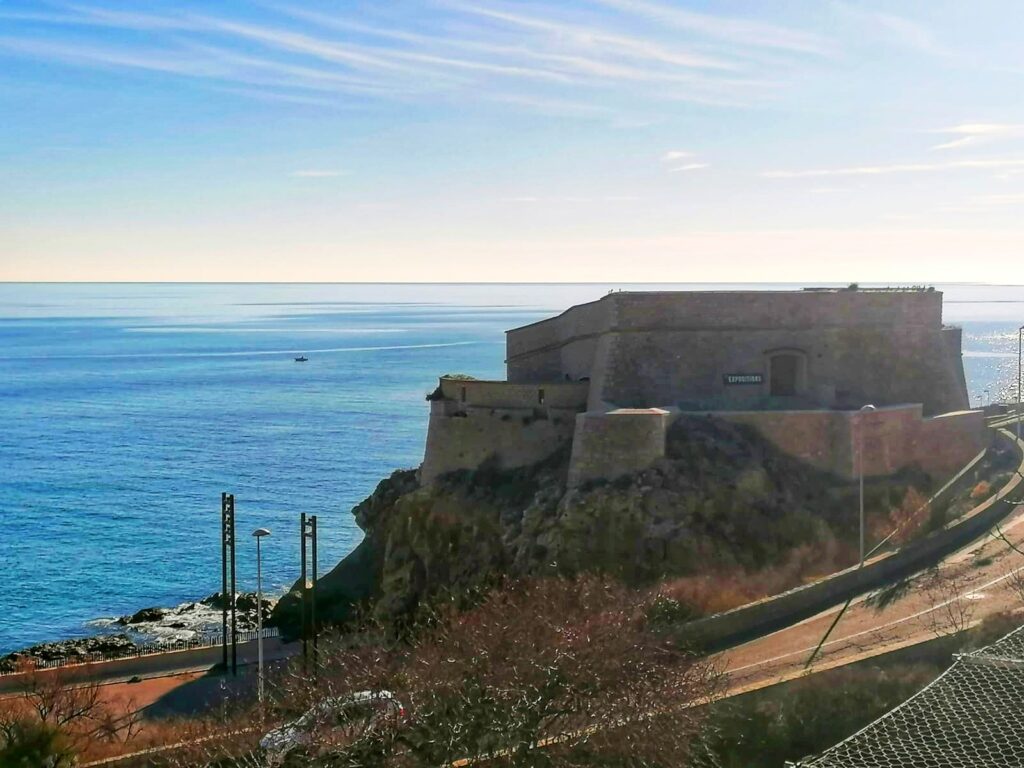
Promenade Maréchal Léclerc
The Théâtre de la Mer has been overlooking the Mediterranean Sea for over three centuries, and every summer welcomes numerous concerts and over 50,000 spectators to its amphitheatre.
Once called Fort Saint-Pierre, the Théâtre de la Mer was part of a defensive complex with the semaphore to protect the population and the port of Sète from land and sea attacks. Equipped with gun batteries, it operated in tandem with Fort Richelieu. It was used as barracks, a prison and then a hospital, before being converted into a theatre in 195, under the impetus of actor Jean Deschamps, who set up his Festival de la Mer there. Its first musical highlights came with Claude François in the 1970s. Spectators can enjoy a unique experience, where the sounds of the waves blend harmoniously with the music and voices of the actors, creating a magical, immersive atmosphere.
Sète’s harbour
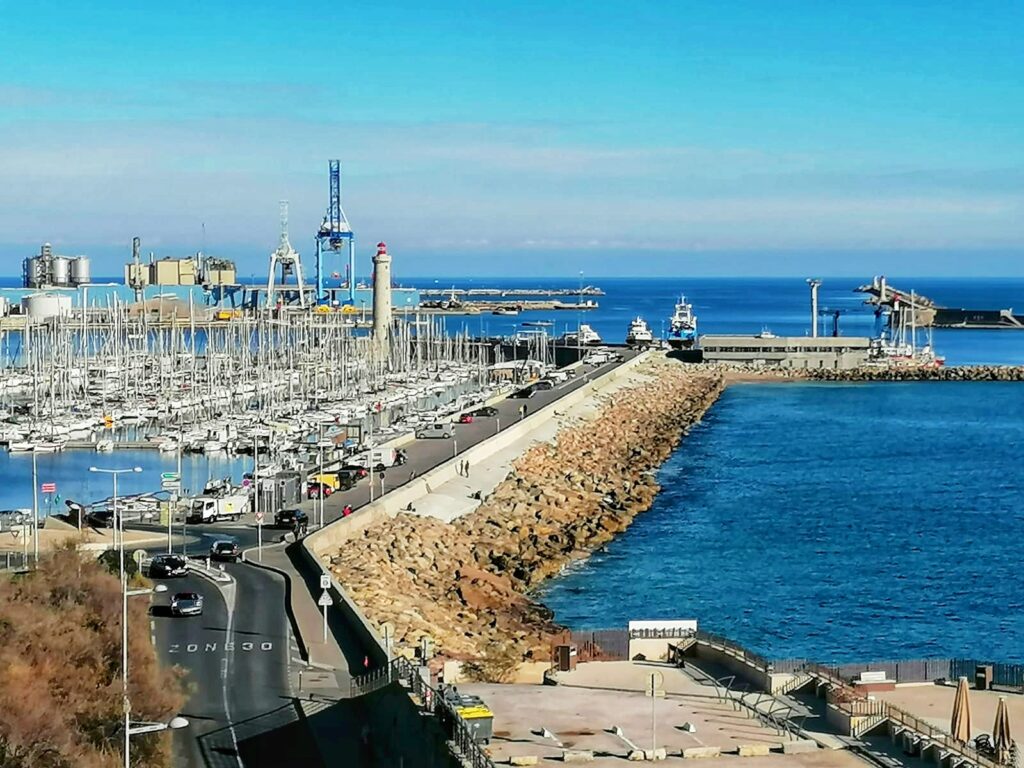
With a year-round catch of 2,200 tonnes, Sète is the leading fishing harbour in the French Mediterranean Sea, thanks to its fish auction, its fleet of tuna boats and trawlers, and its small-scale net casting operations at sea and in the lagoon.
At the heart of the old port, the Sète fish auction supplies the whole of France, including Paris, Lyon, Toulouse and Marseille, as well as Italy and Spain.
Local fishermen, whose tradition has been handed down from generation to generation, play an essential role in the town’s economy. The fleet of tuna boats and trawlers is equally impressive. Thanks to this abundance of water and its love of the sea, Sète is also known for its annual Sea Festival. For several days, the streets are transformed into a veritable maritime theatre, with parades of decorated boats and shows highlighting the town’s maritime history and culture.
Le Spoon Bar
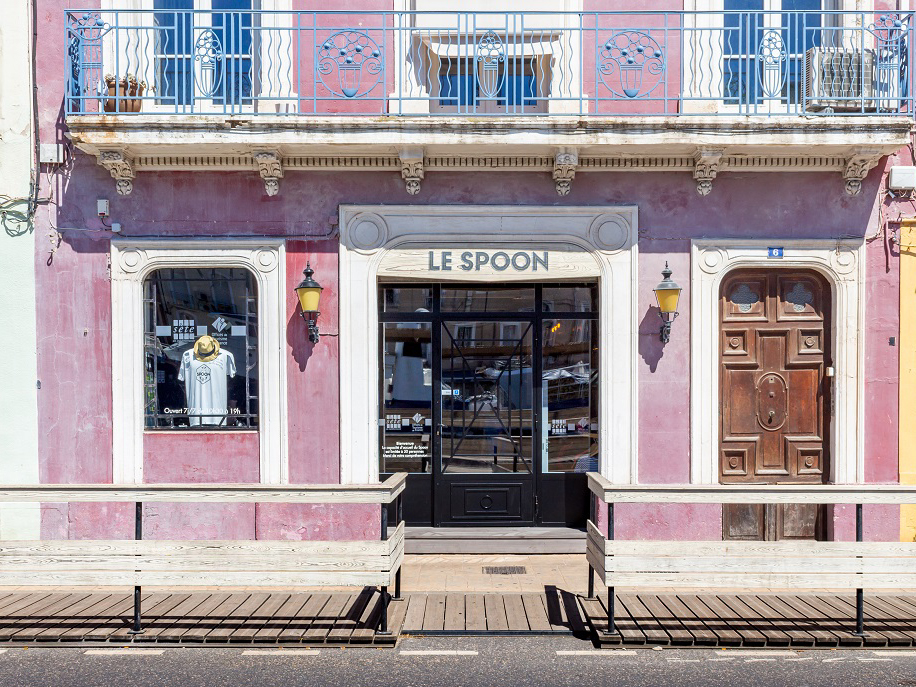
6 Quai Aspirant Herber
Le Spoon is not a real bar, but a set in Demain nous appartient. Le Spoon sequences are shot in the film studio. And don’t count on having lunch at the “Little Spoon” food truck, which is also a set!
Located opposite the Quai de la Marine, the famous bar-restaurant quickly became a place of pilgrimage for many viewers of the TF1 series. Today, in association with the Sète tourist office, this former shop houses the show’s official boutique.
The Cadre Royal
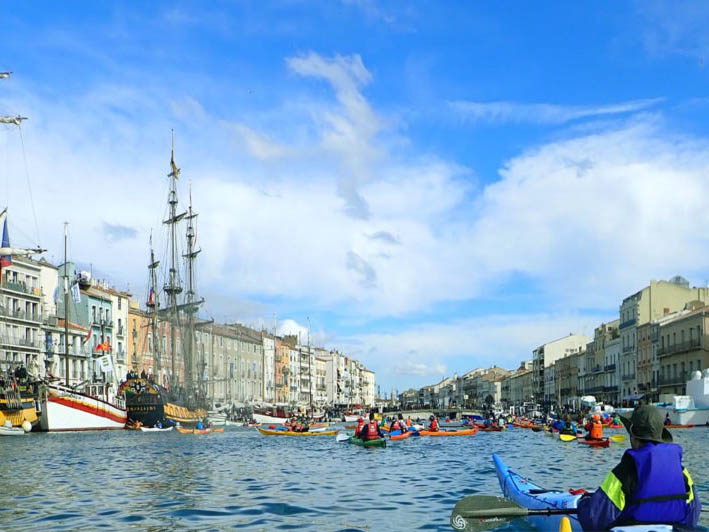
The Cadre Royal is the stretch of canal bounded by two bridges, the Civette and the Savonnerie. Since 1666, one of the most popular nautical jousting tournaments in France has been held there during the Saint-Louis festival.
Beyond their entertainment value, nautical jousting tournaments are a means of preserving and passing on the region’s cultural heritage. Each joust is an opportunity to bring the locals together and create a sense of belonging to a community proud of its traditions.
As you stroll along the canal in Sète, take time to admire the picturesque houses, feel the excitement of the crowds and listen to the clamours of joy as the jousters battle it out. You’ll be immersed in a real journey back in time, where history and tradition intertwine to create a unique and unforgettable spectacle.
La Corniche Beach
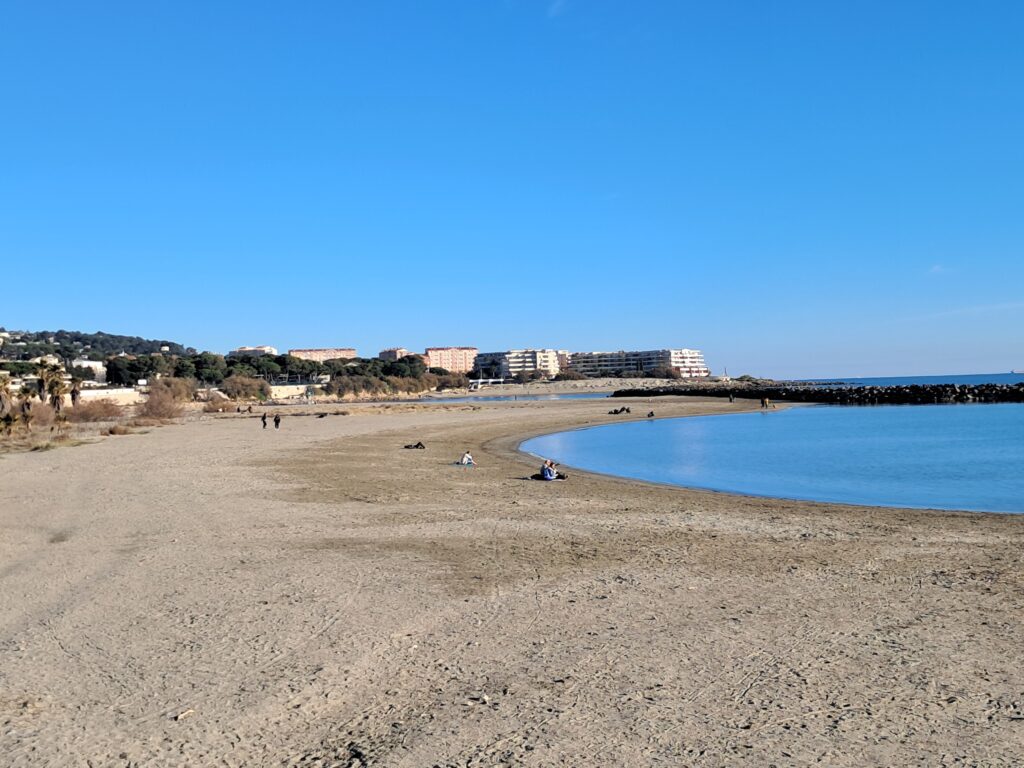
This is where you’ll find Antoine Myriel’s apartment at 2 rue du Levant and the apartment of the Daunier family on the Promenade du Lido.
La Corniche beach (entrances 4 to 11) is at the start of the Promenade de la Corniche, near the Canal des Quilles and the Sète stadium. This wide, sandy beach features two coves some 200 metres wide and is protected by a large seawall. In summer, there are several restaurants on the beach and a children’s playground. On the right-hand side of the beach is the Centre Nautique Françoise Pascal and an area reserved for windsurfing and kite surfing. An access ramp is provided for people with reduced mobility.
The beach restaurant
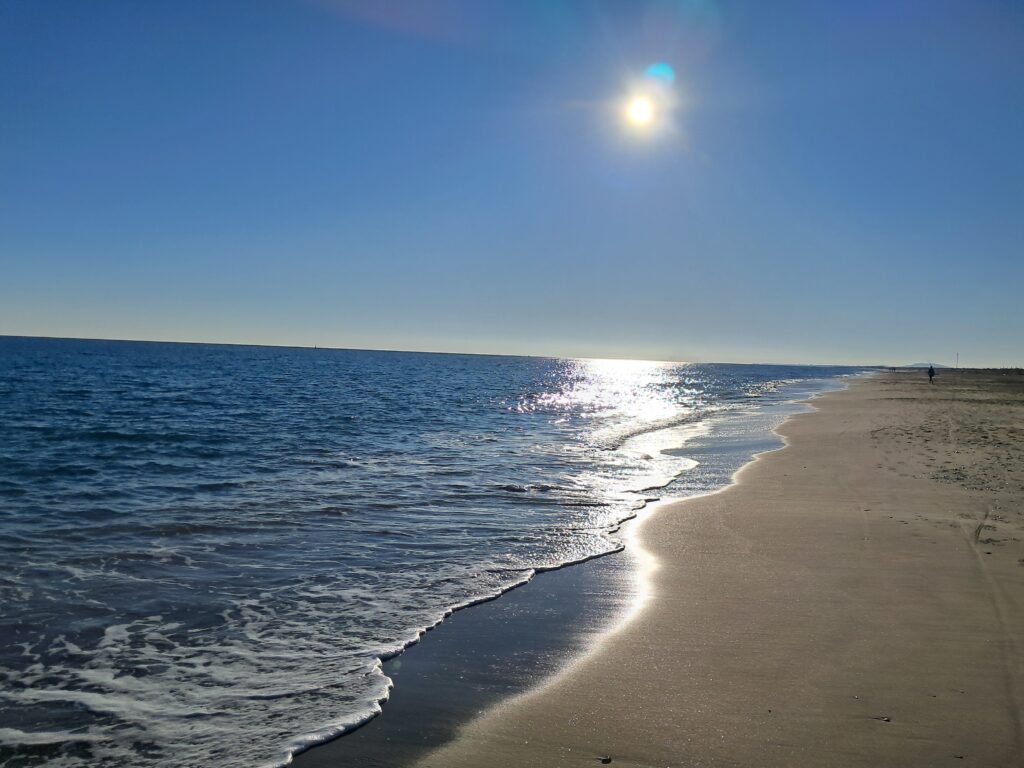
14 rue Gabriel Péri
Located along the beach that links Sète to Marseillan-Plage every year during the summer months, several restaurants and bars are set up on the beaches. Among these places to relax is the Paillote du Spoon, but it is only a filming location for Demain nous appartient. It is located at 3 Digues beach, entrance 54.
Note: All photos are the property of Leigh and Mehdi Kamraoui and lepouffre.com. They are not royalty free.
